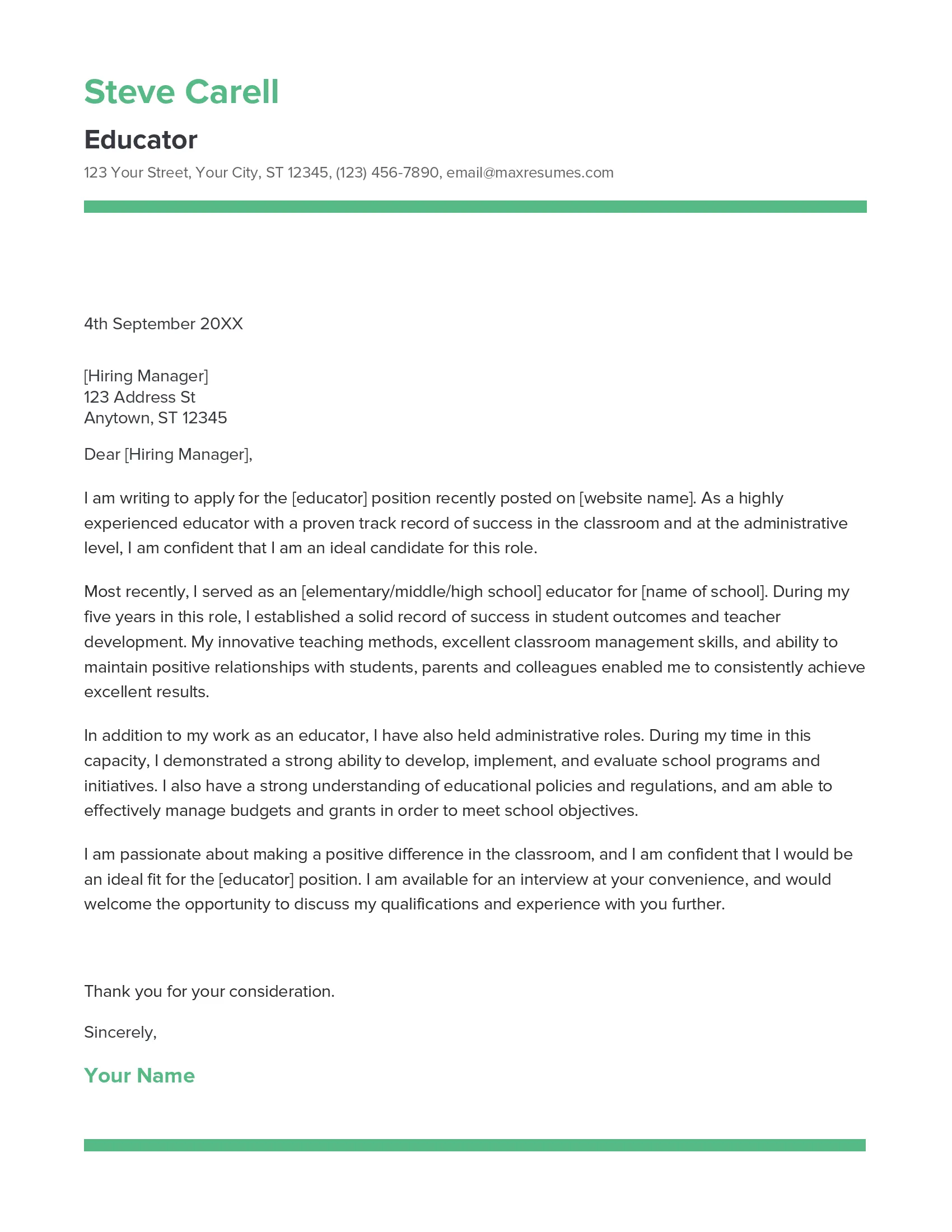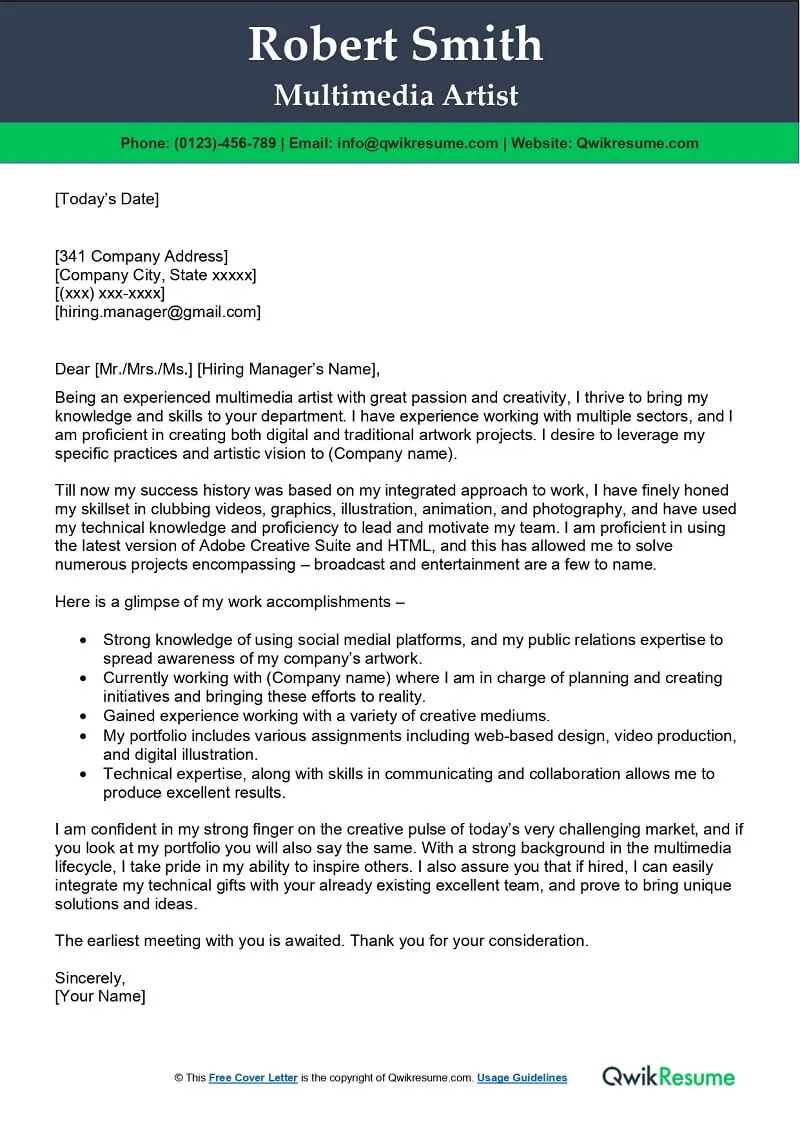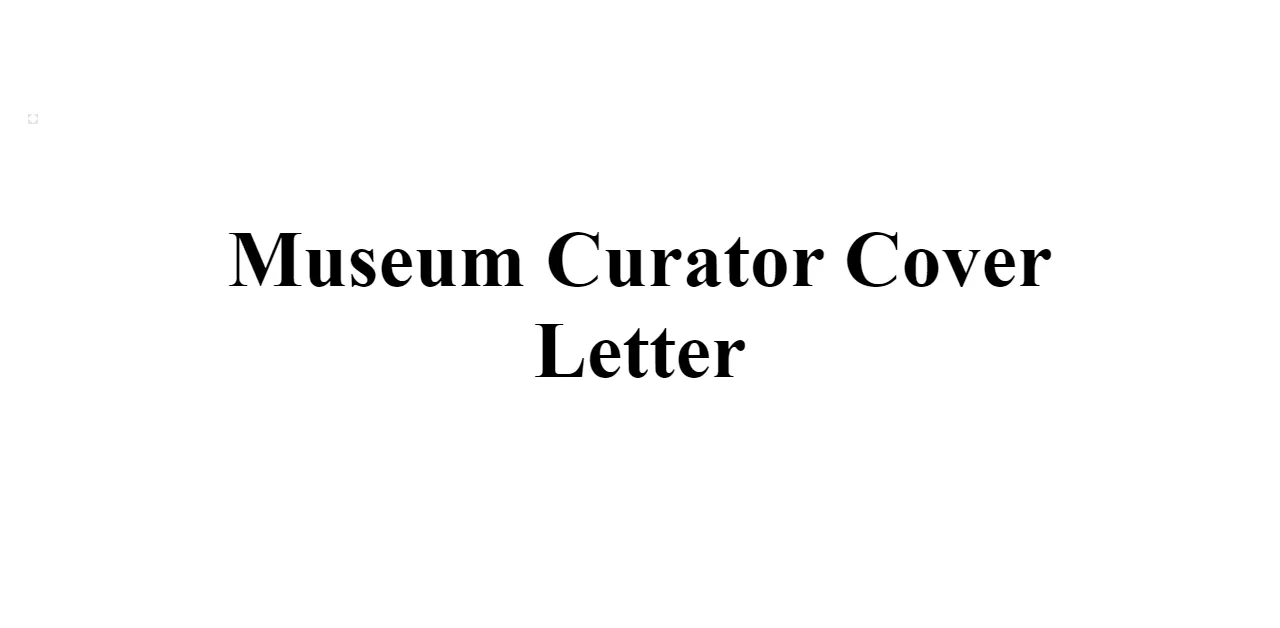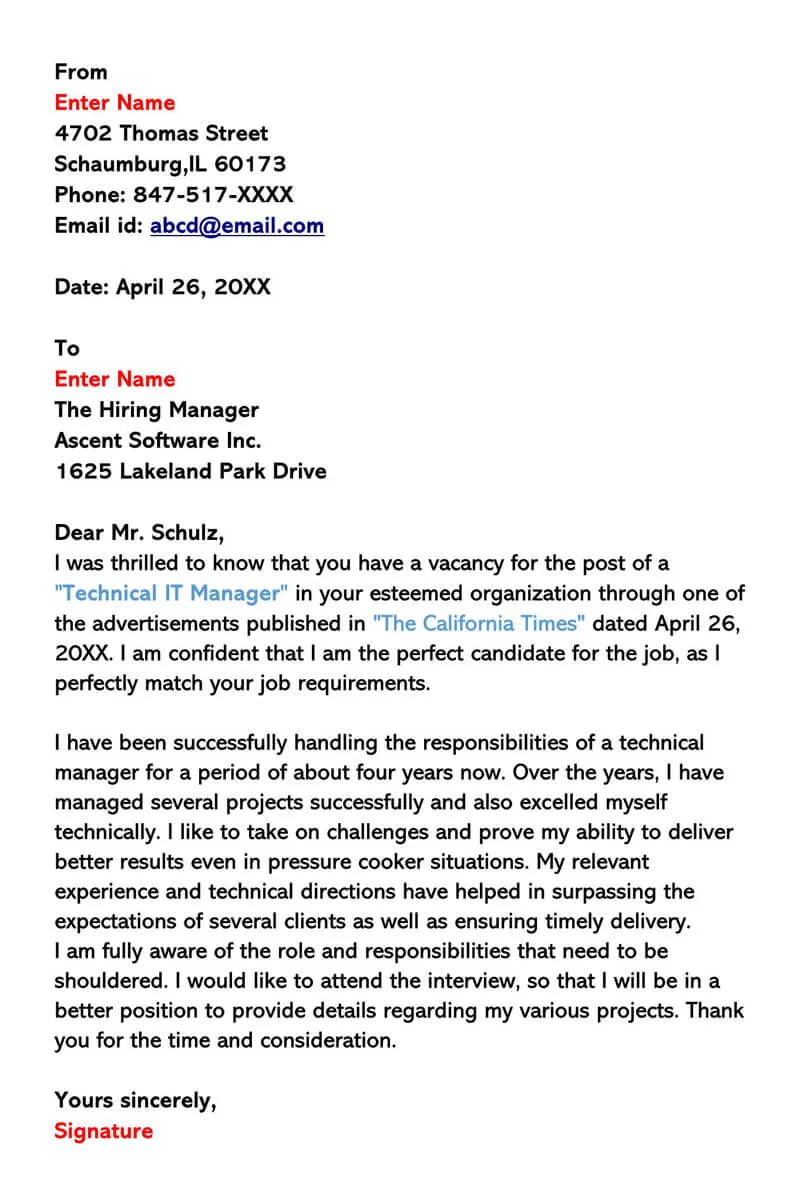Crafting Your Museum Educator Cover Letter
A compelling cover letter is your first chance to make a strong impression when applying for a Museum Educator position. It’s more than just a formality; it’s a crucial tool for showcasing your qualifications, passion, and suitability for the role. With a well-crafted cover letter, you can differentiate yourself from other applicants and increase your chances of securing an interview. The key is to demonstrate a clear understanding of the position’s requirements and a genuine enthusiasm for museum education. This guide offers five essential tips to help you create a cover letter that stands out, highlighting your skills and experience effectively. Remember, the goal is to create a lasting positive impression, setting the stage for a successful application.
Understanding the Museum Educator Role
Before you start writing, it’s essential to have a clear understanding of what a Museum Educator does. This role typically involves designing and delivering educational programs, tours, and workshops for diverse audiences. Museum Educators work to make exhibits accessible and engaging, fostering a deeper understanding and appreciation of art, history, science, or other subjects. They often collaborate with curators, other educators, and community groups to create enriching experiences. The role demands excellent communication, interpersonal, and organizational skills, as well as a passion for lifelong learning. Thoroughly researching the specific museum and position you’re applying for will allow you to tailor your cover letter to meet their specific needs and expectations. This understanding will help you emphasize the most relevant aspects of your experience and skills, ensuring your cover letter is both targeted and persuasive.
Researching the Museum and the Position

A successful cover letter demonstrates that you’ve done your homework. Start by thoroughly researching the museum itself. Explore its mission, values, current exhibits, and educational programs. Visit the museum’s website, browse its social media, and read any available publications. This research will give you insights into the museum’s priorities and the specific qualities they seek in a Museum Educator. Next, carefully review the job description. Identify the key requirements, desired skills, and specific responsibilities outlined. Take note of the language used, as it offers valuable clues about the museum’s culture and preferences. By aligning your cover letter with the museum’s mission and the job’s requirements, you can immediately demonstrate your interest and suitability. This targeted approach increases the likelihood of your cover letter grabbing the hiring manager’s attention and setting you apart from generic applicants.
Highlighting Relevant Skills and Experience
Your cover letter should showcase how your skills and experience align with the job’s requirements. Instead of simply listing your qualifications, provide specific examples that illustrate your abilities. Consider your experience in education, public speaking, program development, and working with diverse audiences. Quantify your achievements whenever possible. For example, instead of saying ‘Led educational tours,’ say ‘Led educational tours for an average of 50 visitors per week, resulting in a 20% increase in positive visitor feedback.’ Use action verbs to describe your accomplishments, such as ‘developed,’ ‘implemented,’ ‘managed,’ and ‘collaborated.’ Tailor your examples to match the museum’s needs. If the job description emphasizes audience engagement, highlight your experience in creating interactive programs. If the museum values community outreach, showcase your experience in community engagement.
Showcasing Education and Qualifications
In your cover letter, clearly state your educational background and any relevant certifications or qualifications. If you have a degree in education, art history, museum studies, or a related field, mention it prominently. List any specific coursework or training that aligns with the job requirements. For example, if the position requires experience in early childhood education, highlight any relevant courses or workshops you’ve completed. If you have certifications in areas such as museum education, interpretation, or accessibility, be sure to include them. Briefly describe any relevant internships, volunteer experiences, or professional development activities. These experiences provide valuable context and demonstrate your commitment to the field. When describing your education and qualifications, focus on the aspects that are most relevant to the specific Museum Educator position you are applying for, emphasizing how your knowledge and skills can contribute to the museum’s mission.
Emphasizing Communication and Interpersonal Skills

Museum Educators must possess excellent communication and interpersonal skills. Highlight your ability to communicate clearly and effectively with diverse audiences, including children, adults, and individuals with disabilities. Mention your experience in public speaking, presentation, and facilitating group discussions. Describe any experience you have in adapting your communication style to suit different learning styles and needs. Emphasize your ability to build rapport, foster engagement, and create a welcoming environment for visitors. Showcase your teamwork and collaboration skills. Museum Educators often work closely with other staff members, including curators, volunteers, and other educators. Provide examples of how you’ve successfully collaborated with others to achieve shared goals. Demonstrate your ability to resolve conflicts, manage difficult situations, and maintain a positive attitude under pressure. These skills are crucial for creating positive experiences and building relationships with visitors and colleagues alike.
Demonstrating Passion for Museum Education
Your cover letter should convey your genuine enthusiasm for museum education. Share why you are passionate about working with museums and educating others about art, history, or science. Describe any personal experiences that have inspired your interest in this field. For example, perhaps you were captivated by a museum visit as a child or have a deep appreciation for a particular subject. Explain what excites you about the prospect of working at the specific museum. Highlight any of its exhibits, programs, or initiatives that resonate with you. Show that you are aware of the museum’s impact and are eager to contribute to its mission. Convey your commitment to lifelong learning and your desire to continuously improve your skills as an educator. Showing your passion will help you make a memorable impression and show that you are the right fit.
Structuring Your Museum Educator Cover Letter
A well-structured cover letter is easier to read and helps you effectively communicate your qualifications. Use a standard business letter format. Start with your contact information, the date, and the hiring manager’s name and address. Follow with a clear and concise opening paragraph, a body of several paragraphs, and a strong closing paragraph. Keep each paragraph focused on a specific idea. This improves the flow and clarity of your letter. Ensure a consistent tone and style throughout. Proofread your cover letter carefully to eliminate any errors in grammar, spelling, or punctuation. A well-structured cover letter demonstrates professionalism and attention to detail, leaving a positive impression on the hiring manager. This structure allows for a clear, concise and compelling presentation.
Opening with a Strong Hook

Your opening paragraph is your chance to grab the reader’s attention. Start with a concise statement that immediately highlights your interest in the position and the museum. Mention where you saw the job posting. State the specific Museum Educator role you are applying for and why it appeals to you. Briefly mention a key accomplishment or skill that makes you a strong candidate. You can express your passion by stating your enthusiasm for museums. Make it clear you understand what the job entails and what the museum is looking for. This ensures that the hiring manager immediately grasps your intentions and is motivated to keep reading. The opening paragraph should be engaging and set the tone for the rest of your cover letter. A compelling opening can dramatically increase your chances of making a positive first impression.
Body Paragraphs Highlighting Key Achievements
Use the body paragraphs to provide detailed examples of your skills and experience. Break down the key requirements of the job and address each one in a separate paragraph. Discuss your accomplishments in each area, providing concrete evidence of your abilities. Use the STAR method (Situation, Task, Action, Result) to structure your examples. Describe the situation you were in, the task you needed to complete, the actions you took, and the positive results you achieved. Quantify your achievements whenever possible. For example, instead of saying ‘Increased visitor engagement,’ say ‘Increased visitor engagement by 15% through the implementation of interactive programs.’ Focus on the most relevant experiences and achievements that align with the job requirements. This helps the hiring manager see the tangible value that you would bring to the role and demonstrate your impact.
Closing with a Call to Action
End your cover letter with a strong closing paragraph that reinforces your interest and encourages the hiring manager to take the next step. Reiterate your enthusiasm for the position and the museum. Summarize your key qualifications and how they align with the job requirements. Clearly state that you would like to be invited for an interview and express your willingness to discuss your qualifications further. Thank the hiring manager for their time and consideration. Provide your contact information, making it easy for them to get in touch with you. Ensure the closing paragraph is concise, professional, and leaves a lasting impression. A well-crafted closing can significantly increase your chances of receiving an interview invitation, so it’s an important part of the cover letter.
Formatting and Proofreading Your Cover Letter

The appearance of your cover letter is just as important as its content. Poor formatting and errors can distract the hiring manager and reflect poorly on your attention to detail. Formatting your cover letter to be clear and easy to read is essential. Proofreading is an important step in ensuring that your cover letter is professional and error-free. It demonstrates your commitment to precision and attention to detail, which are crucial qualities for a Museum Educator.
Formatting for Readability
Use a professional font, such as Times New Roman, Arial, or Calibri, in a readable size (11 or 12 points). Use one-inch margins and single spacing to create a clean layout. Break up large blocks of text into shorter paragraphs for ease of reading. Use bullet points to highlight key accomplishments and skills. Ensure the layout is consistent and visually appealing. Avoid using excessive bolding, italics, or underlining, as this can distract the reader. Proofread your cover letter to avoid any formatting inconsistencies. Your goal is to create a cover letter that is visually appealing and easy to navigate. Proper formatting helps the hiring manager quickly and efficiently assess your qualifications and experience.
Proofreading for Errors
Carefully proofread your cover letter for any errors in grammar, spelling, punctuation, and style. Errors can undermine your credibility and give the impression that you are not detail-oriented. Read your cover letter aloud to catch any awkward phrasing or unclear sentences. Use spell-check and grammar-check tools, but don’t rely on them entirely; they may not catch every error. Ask a friend, family member, or career advisor to review your cover letter for a second opinion. Consider printing out the cover letter and proofreading it on paper, as this can help you spot errors you might miss on a screen. Pay close attention to the proper use of capitalization, punctuation, and subject-verb agreement. A flawless cover letter demonstrates professionalism and increases your chances of making a positive impression on the hiring manager.
Tips for Sending Your Cover Letter

Once you’ve finalized your cover letter, follow these tips to ensure a successful submission. Always tailor your cover letter to the specific museum and the position you’re applying for. This personalization demonstrates your genuine interest and increases your chances of being noticed. Address the cover letter to the hiring manager by name if possible. Research the museum’s website or call the human resources department to find the correct contact. Save your cover letter as a PDF file to preserve the formatting. This ensures that your letter will look the same on any computer or device. Proofread the cover letter one last time before sending it. Double-check the job description to make sure you have included all required materials. If submitting your cover letter online, carefully follow the application instructions. Upload your cover letter and resume as separate attachments, and ensure that the file names are clear and professional. Send your cover letter and resume promptly. Don’t delay; respond to job postings as soon as possible to show your enthusiasm. By following these tips, you’ll increase your chances of making a strong impression and landing your dream job as a Museum Educator.
